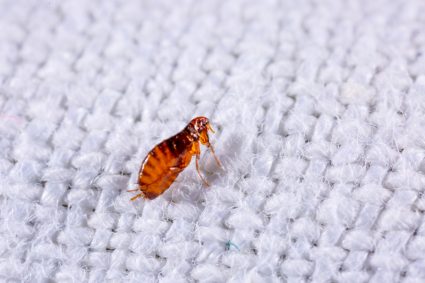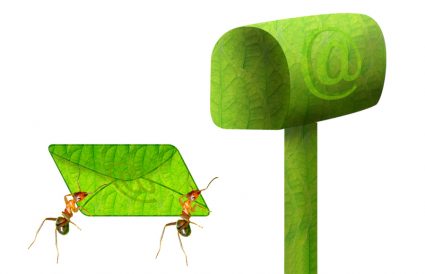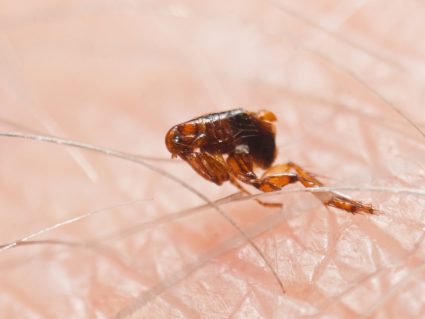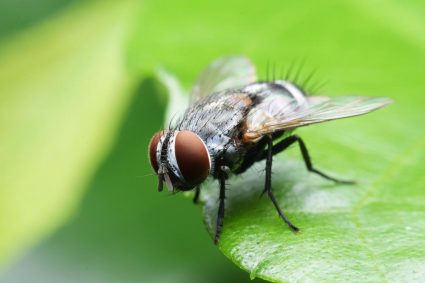
Clothes moths are a common problem that can cause significant damage to your clothing, especially items made from natural fibers like wool, silk, and cashmere. These tiny pests are attracted to the proteins found in body oils and food stains, so they can be particularly problematic in wardrobes and storage areas. A common question that arises when dealing with clothes moths is, “Does bleach kill clothes moths?” Let’s delve into this topic and explore effective ways to manage clothes moths.
Yes, bleach can kill clothes moths. However, it’s not the most practical or safest method for treating clothing or fabrics directly. Using bleach can potentially damage the fabrics and pose health risks. Instead, consider safer and more effective methods such as dry cleaning, laundering, freezing, and using pheromone traps or natural repellents.
What Are Clothes Moths?
Clothes moths are small, beige or buff-colored moths that measure about 1/2-inch in size. Unlike other moths, clothes moths avoid light and prefer dark, undisturbed areas like closets, basements, and attics. They are considered pests because their larvae feed on fabrics made from animal fibers, leading to thinning, holes, and damage.
Does Bleach Kill Clothes Moths?
Yes, bleach can kill clothes moths. However, it is not the most practical or safest method for treating clothing or fabrics directly. Using bleach on clothing and fabrics to kill moths can potentially cause damage to the fabrics and pose health risks. Inhaling bleach can damage the skin, lungs, and organs, leading to skin irritation and burns, eye irritation, coughing, and lightheadedness.
How Does Bleach Interact with Clothes Moths?
While bleach can be used to clean surfaces and containers to remove moth traces, it is not the primary method for exterminating clothes moths or their larvae. Clothes moths are primarily attracted to the proteins found in remnant body oils and skin cells shed during regular wear. Washing shelves with bleach or other cleaning agents will not have any effect on insect pests. Instead, proper storage, cleaning, and non-chemical control methods are more effective in dealing with clothes moths.
Alternative Methods to Kill Clothes Moths
There are several safer and more effective alternative methods to kill clothes moths:
- Dry cleaning: This method effectively kills moth larvae and is worth the expense for wool and other delicate fabrics.
- Laundering: Washing clothes in hot water (at least 120°F) for 20 to 30 minutes can kill all stages of clothes moths.
- Freezing: Placing infested items in a plastic bag and freezing them for at least 48 hours can kill moth larvae.
- Pheromone traps: These traps attract and capture adult male moths, preventing them from mating and reproducing.
- Proper storage: Storing clothes in sealable glass, metal, or heavy plastic containers can help prevent infestations.
- Heating: Exposing infested items to high temperatures (e.g., in a dryer) can also kill clothes moths.
- Natural repellents: Some herbs and essential oils, such as lavender, rosemary, thyme, and cloves, can help repel clothes moths.
Preventive Measures Against Clothes Moths
Prevention is always better than cure. Here are some preventive measures you can take to protect your clothing from clothes moths:
- Clean clothes before storage: Wash or dry-clean garments before putting them away, especially if they are made of natural fibers like wool, silk, or cashmere. Moths are attracted to perspiration and food stains.
- Store clothing properly: Use airtight plastic bags or containers to store clothes when not in use, especially off-season clothing. This helps prevent moths from accessing your garments.
- Maintain good ventilation: Keep your wardrobe well-ventilated and air it regularly to prevent warm, damp, or musty conditions that moths love.
- Use natural repellents: Cedar wood rings, lavender sprays, or homemade repellents can help deter moths.
In conclusion, while bleach can kill clothes moths, it is not the most effective or safest method. Instead, consider alternative methods such as dry cleaning, laundering, freezing, and using pheromone traps or natural repellents. Also, remember to take preventive measures to protect your clothing from clothes moths in the first place. By following these tips and practices, you can keep your clothing safe and free from these pesky pests.
Frequently Asked Questions
What attracts clothes moths to my wardrobe?
Clothes moths are attracted to natural fibers like wool, silk, and cashmere. They are especially attracted to these materials when they are soiled with body oils, perspiration, or food stains.
Can clothes moths infest other areas of my house?
Yes, clothes moths can infest any area where suitable food and living conditions are present. This includes dark, undisturbed areas like basements and attics.
Do clothes moths pose any health risks?
Clothes moths themselves do not pose any direct health risks to humans. However, their larvae can damage clothing and other items made from natural fibers.
Can I use other chemicals aside from bleach to kill clothes moths?
Yes, there are several chemical insecticides available that can effectively kill clothes moths. However, these should be used with caution as they can also pose health risks and may damage certain fabrics. Always follow the manufacturer’s instructions when using these products.
How often should I clean my wardrobe to prevent clothes moth infestation?
Regular cleaning of your wardrobe can help prevent a clothes moth infestation. It’s recommended to clean and air out your wardrobe at least once every season.
Are there any signs that I have a clothes moth infestation?
Yes, signs of a clothes moth infestation can include seeing adult moths (which are small and beige or buff-colored), finding irregular holes in your clothing, or noticing a musty smell in your wardrobe.












